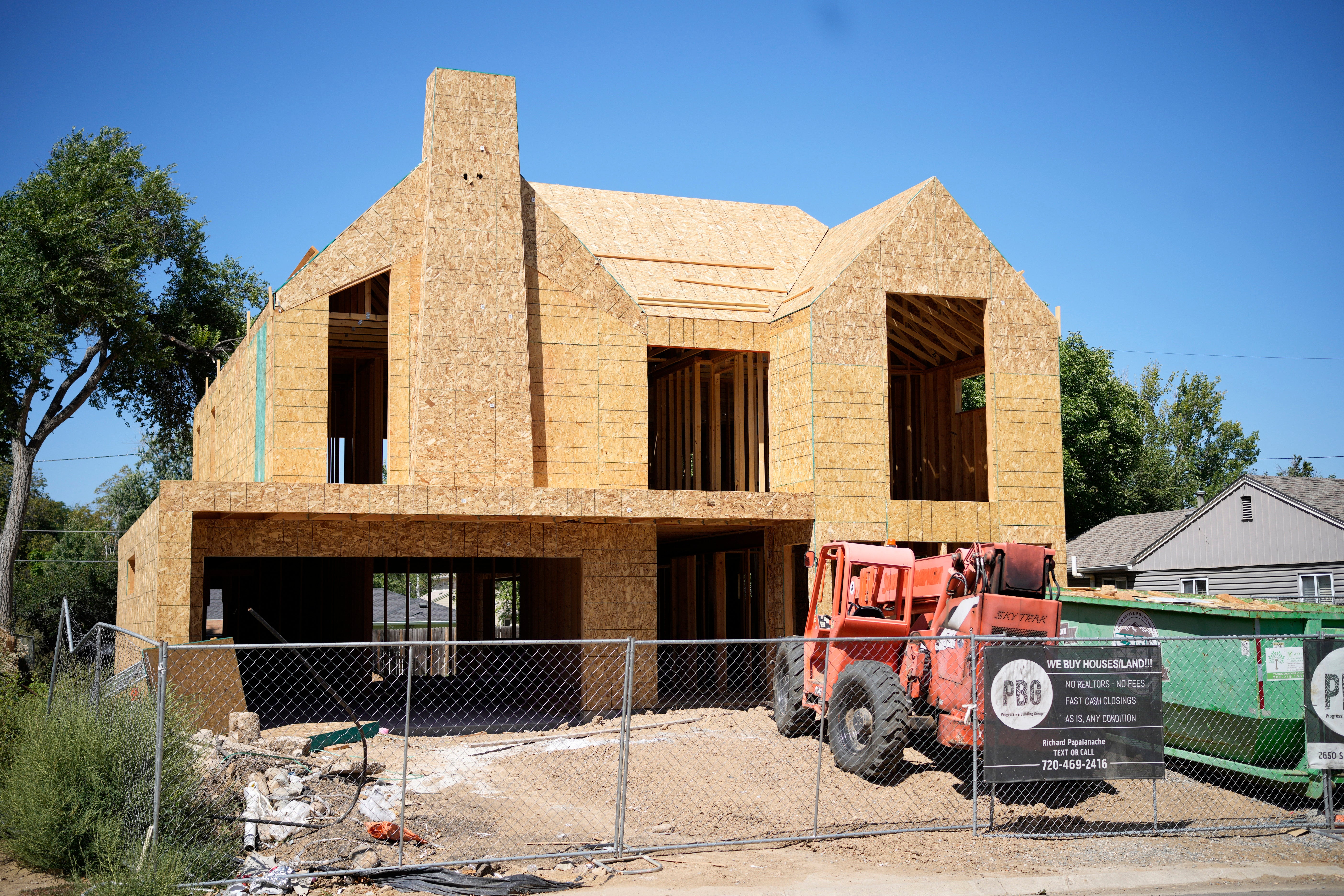Average long-term US mortgage rate edges closer to 7%, rising to highest level since early March
The average long-term U.S. mortgage rate rose to its highest level in five weeks, a setback for prospective homebuyers during what’s traditionally the busiest time of the year for home sales

Your support helps us to tell the story
From reproductive rights to climate change to Big Tech, The Independent is on the ground when the story is developing. Whether it's investigating the financials of Elon Musk's pro-Trump PAC or producing our latest documentary, 'The A Word', which shines a light on the American women fighting for reproductive rights, we know how important it is to parse out the facts from the messaging.
At such a critical moment in US history, we need reporters on the ground. Your donation allows us to keep sending journalists to speak to both sides of the story.
The Independent is trusted by Americans across the entire political spectrum. And unlike many other quality news outlets, we choose not to lock Americans out of our reporting and analysis with paywalls. We believe quality journalism should be available to everyone, paid for by those who can afford it.
Your support makes all the difference.The average long-term U.S. mortgage rate rose to its highest level in five weeks, a setback for prospective homebuyers during what's traditionally the busiest time of the year for home sales.
The average rate on a 30-year mortgage rose to 6.88% from 6.82% last week, mortgage buyer Freddie Mac said Thursday. A year ago, the rate averaged 6.27%.
When mortgage rates rise, they can add hundreds of dollars a month in costs for borrowers, limiting how much they can afford at a time when the U.S. housing market remains constrained by relatively few homes for sale and rising home prices.
Rates have been mostly drifting higher in recent weeks as stronger-than-expected reports on employment and inflation have stoked doubt among bond investors over how soon the Federal Reserve will move to lower its benchmark interest rate. The central bank has signaled that it expects to cut its short-term rate three times this year once it sees more evidence of cooling inflation.
On Wednesday, Treasury yields jumped in the bond market following a report showing that inflation was hotter last month than economists expected. The March consumer prices report was the third straight showing inflation readings well above the Fed’s 2% target. A report on Thursday showed inflation at the wholesale level was a touch lower last month than economists expected.
The yield on the 10-year Treasury, which lenders use as a guide to pricing loans, jumped to 4.57% on Thursday afternoon, it’s highest level since November. How the bond market reacts to the Fed’s interest rate policy, the moves in the 10-year Treasury yield, as well as other factors can influence mortgage rates.
After climbing to a 23-year high of 7.79% in October, the average rate on a 30-year mortgage has remained below 7% since early December, though it also hasn’t gone below the 6.6% it averaged in mid January.
Mortgage rates will likely continue to hover between that 6.6% and 7% range until inflation shows convincing progress towards the Fed’s target, said Hannah Jones, Realtor.com’s senior economic research analyst.
“Eager buyers and sellers are hoping to see more favorable housing conditions as the spring selling season kicks off,” said Jones. “However, mortgage rates have offered little relief as economic data, as measured by both inflation and employment, remains strong.”
The U.S. housing market is coming off a deep, 2-year sales slump triggered by a sharp rise in mortgage rates and a dearth of homes on the market. The overall pullback in mortgage rates since their peak last fall helped spur a pickup in sales the first two months of this year.
Sales of previously occupied U.S. homes rose in February from the previous month to the strongest pace in a year. That followed a month-to-month home sales increase in January.
Still, the average rate on a 30-year mortgage remains well above where it was just two years ago at 5%. That large gap between rates now and then has helped limit the number of previously occupied homes on the market because many homeowners who bought or refinanced more than two years ago are reluctant to sell and give up their fixed-rate mortgages below 3% or 4%.
Many economists still expect that mortgage rates will ease moderately later this year, though most forecasts call for the average rate on a 30-year home loan to remain above 6%.
The cost of refinancing a home loan also got pricier this week. Borrowing costs on 15-year fixed-rate mortgages, often used to refinance longer-term mortgages, rose this week, pushing the average rate to 6.16% from 6.06% last week. A year ago it averaged 5.54%, Freddie Mac said.